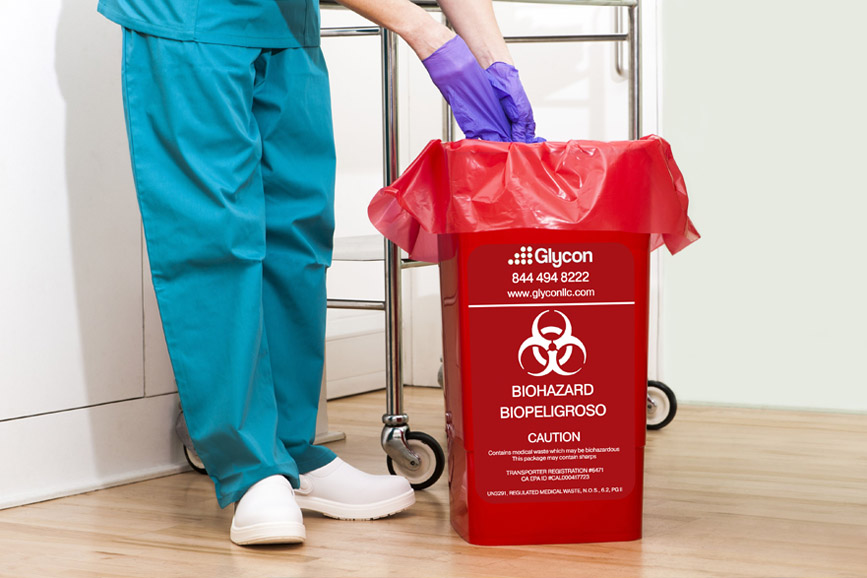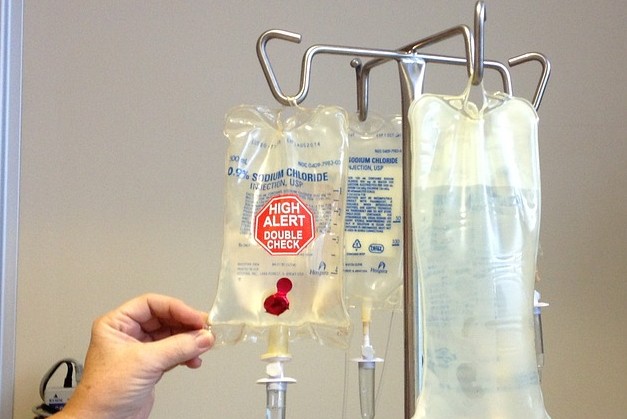Medical Waste Removal Mastery: Where Service Excellence Fulfills Health Specifications
Medical Waste Removal Mastery: Where Service Excellence Fulfills Health Specifications
Blog Article
Remain Ahead of Laws: Specialist Guidance on Medical Garbage Disposal
In a world where the medical care industry is regularly advancing, it is important for medical centers to stay ahead of laws when it comes to the proper disposal of medical waste. With rigorous standards and frequent regulative changes, it can be challenging to browse the intricacies of this process. With professional suggestions, facilities can ensure conformity and minimize dangers associated with improper waste disposal. From understanding the various categories of clinical waste to carrying out the appropriate collection and segregation methods, this discussion will give actionable ideas and valuable insights to help facilities remain ahead of policies in the ever-changing landscape of medical waste disposal.
Recognizing Medical Waste Categories
Comprehending clinical waste classifications is crucial for correct disposal and monitoring in healthcare facilities. Clinical waste describes any type of waste created by health care activities that may present a danger to public health and wellness or the atmosphere. It is vital to categorize clinical waste properly to guarantee its safe handling, disposal, transport, and therapy.
There are several classifications of clinical waste that medical care facilities require to be accustomed to. One of the most typical categories include transmittable waste, pathological waste, sharps waste, pharmaceutical waste, and chemical waste. Each classification has particular standards and regulations for its appropriate management and disposal.
Pathological waste refers to human tissues, body organs, or body components that call for special handling and disposal. Pharmaceutical waste comprises run out, unused, or infected medicines that require cautious handling and disposal.
Remaining Up-To-Date With Regulatory Modifications
Remaining existing with regulative changes is vital for health care facilities to guarantee compliance and proper administration of clinical waste disposal. medical waste removal service. With guidelines regularly advancing, it is essential for healthcare centers to stay up-to-date to stay clear of charges, fines, and possible injury to the atmosphere and public wellness
To remain ahead of governing changes, medical care facilities should develop a system for monitoring and monitoring updates. This can be done by signing up for regulatory e-newsletters, going to seminars and workshops, and proactively joining market organizations. Furthermore, facilities ought to assign a team member or team liable for staying informed and sharing information to appropriate stakeholders.
Normal communication with governing companies is likewise important. Medical care facilities should develop relationships with local, state, and government agencies to guarantee they know any kind of modifications in policies that might affect their waste management practices. This can be done via regular meetings, engagement in public remark durations, and aggressive interaction with regulatory firms.
Moreover, healthcare facilities should take into consideration partnering with waste management firms that specialize in clinical waste disposal (medical waste disposal services with WasteX). These companies are often fluent in the most recent policies and can provide advice and support to make certain conformity
Applying Appropriate Collection and Partition Techniques
To effectively manage clinical garbage disposal, medical care centers must establish appropriate collection and partition methods based on governing guidelines. Carrying out these techniques ensures the secure handling and disposal of potentially unsafe materials, safeguards the atmosphere, and lessens the threat of injuries and infections to healthcare workers and the general public.
Appropriate collection and partition methods include making use of assigned containers and classifying systems. Medical care centers need to provide plainly identified containers for various kinds of clinical waste, such as sharps, contagious waste, pharmaceutical waste, and non-hazardous waste. These containers should be color-coded and clearly significant to stay clear of complication and promote easy recognition.
In addition, healthcare facilities need to train their staff on the appropriate procedures for accumulating and segregating clinical waste. This includes informing them on the various sorts of waste, the proper containers to utilize, and the value of following guidelines and guidelines. Routine training sessions and refresher training courses must be carried out to make sure that employee continue to be up-to-date on finest practices.
Additionally, healthcare facilities need to establish a system for regular collection and disposal of clinical waste. This may entail partnering with accredited waste administration business that focus on clinical garbage disposal. These business will make certain that the accumulated waste is delivered and dealt with in compliance with regulatory needs.
Selecting the Right Disposal Approaches

Incineration is one of the most efficient and usual approaches for taking care of certain sorts of medical waste, such as pathological waste and sharps. It involves the regulated burning of waste at high temperatures, lowering it to ash. Nonetheless, incineration can release hazardous toxins into the air and add to air contamination.

Chemical therapy includes the use of chemicals to counteract the waste and decontaminate. Microwave therapy makes use of microwave power to warmth and decontaminate the waste.
Guaranteeing Compliance With Paperwork and Training
After very carefully taking into consideration the appropriate disposal techniques for medical waste, health care centers must make sure conformity with regulations and reduce environmental impact by carrying out effective documentation and training procedures. This step is vital in maintaining a lasting and safe setting for both health care employees and the public.

Training is just as crucial in making sure compliance with regulations. Medical care workers that deal with medical waste must receive ideal training on waste segregation, handling, and disposal procedures. This training should cover subjects such as the correct use personal safety equipment, recognition of different kinds of waste, and the right disposal techniques for each waste group. By giving detailed training, healthcare facilities can empower their personnel to make educated decisions and lessen the medical waste disposal services with WasteX danger of improper waste disposal.
Final Thought
To conclude, staying ahead of policies in medical garbage disposal is important for healthcare facilities. medical waste removal near me. Comprehending the different categories of clinical waste, staying upgraded with regulatory modifications, executing proper collection and partition techniques, choosing the appropriate disposal approaches, and making certain conformity through documents and training are all essential actions. By adhering to these guidelines, healthcare companies can efficiently dispose and handle of medical waste in a risk-free and liable manner
From comprehending the various categories of medical waste to implementing the appropriate collection and segregation approaches, this discussion will supply Bonuses workable tips and beneficial understandings to assist facilities remain ahead of laws in the ever-changing landscape of clinical waste disposal. - medical waste disposal services with WasteX
The most usual categories consist of contagious waste, pathological waste, sharps waste, pharmaceutical waste, and chemical waste. Medical care facilities need to give clearly classified containers for different kinds of clinical waste, such as sharps, contagious waste, pharmaceutical waste, and non-hazardous waste. Healthcare centers need to develop an extensive system to videotape and track all facets of medical waste disposal, consisting of types of waste produced, quantities, and disposal approaches used. Healthcare employees that handle medical waste needs to receive ideal training on waste segregation, taking care of, and disposal procedures.
Report this page